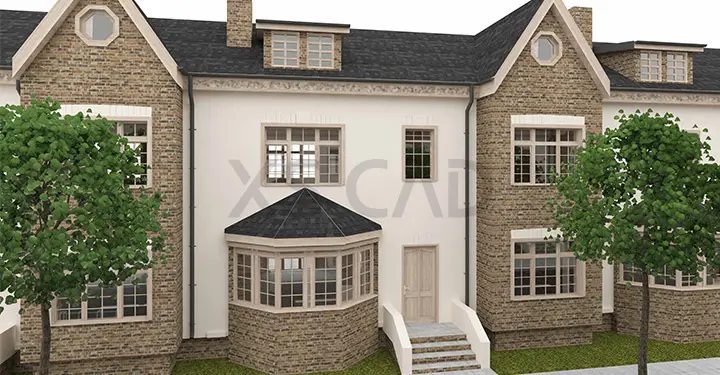Our Articles

Why Residential Architectural Rendering is Paramount for Homebuilders
Homebuilders can offer people the world, especially in an environment where the chances of people working from home are increasing exponentially. New residential design will have to consider that the home will most likely be both the office and the home – a whole world for some. An overwhelming number of people seek visual and interactive content to help make decisions before buying a home, leading to the paramount importance of residential 3D architectural rendering services in the homebuilding industry. Reliable residential rendering services can help homebuilders provide photorealistic exterior, interior or interactive floor plan views for customers of their future world.
With the homebuilding industry becoming fiercely competitive in developed markets, the expectations from both the demand side (potential owners) as well as the investor side (financial institutions) have significantly changed. As return on investment is crucial for both the owners and the funding institutions, homebuilders walk on a tightrope. In addition to this, homebuilding companies are required to procure permits and approvals from construction and local planning authorities. In such a scenario, residential architectural rendering is a boon for homebuilders in addition to adding value to the potential owners and investors.
What do we mean by a rendered image?
Rendering involves the process of using a model to generate an image by utilising specific software tools. Images created through rendering for homebuilding are photorealistic CGI (Computer Generated images) versions of any or several views of a homebuilder’s project. Though rendered images may be created as 2D or 3D, 3D views are more popular for their realism and for showing depth and shadows.
Details in homebuilder 3D rendered images can include a variety of lighting, textures and environmental features, such as beautiful blue skies with fluffy white clouds or skyscraper buildings in the background; roads, pathways and sidewalks leading up to a house; and cars, people, pets, stores and other kinds of urban sights. The choices are endless.
Some of the multifaceted benefits that rendered 3D stills and walk-throughs offer homebuilders during the different stages of a residential construction project are:
Pre-Construction Planning
In the homebuilding industry, the pre-construction planning stage requires evaluating attractive markets, identifying sites, and securing investment from potential investors and funding institutions.
Design Stage
Known as the most critical phase, the design stage starts with concept ideation and ends with construction documentation submittals to seek necessary approvals and permits from local planning authorities and regulatory bodies. Homebuilder’s major responsibilities include preparing conceptual sketches, developing detailed floor plans, sections, elevations, perspective images, and construction drawing sets.
Construction Stage
At this stage, the finalised design is handed over to the contractor to initiate the build process.
Post-Construction Stage
Once the construction phase is complete, homebuilder 3D rendered images can contribute in the following ways:
To summarise, 3D architectural rendering for residential projects can add value to homebuilders during different phases. It can help them instill confidence in funding partners and investors; expedite their approval-seeking process from local planning authorities; assess and review a project’s progress vis-à-vis proposed design; and act as a perfect marketing tool to convince potential owners.
The many advantages of homebuilder 3D rendered images require that these images are developed to the highest possible quality by experienced and reliable 3D architectural rendering service providers. For some large homebuilders, it may not be possible to create these images in-house, due to a scarcity of human resources, the need to update software or challenges related to keeping overhead costs to a minimum. One of the more popular solutions for such eventualities is for homebuilders to find offshore partners who can help them navigate through these situations by providing high-quality residential rendering services that are cost-effective and delivered on time.
XS CAD has valuable experience as a 3D architectural rendering services provider, providing BIM modelling services, 3D residential visualisation services and homebuilders’ 3D rendered images for global large housing firms. Our range of services for architects, retailers, contractors and homebuilders across the world include 2D architectural drafting, 3D modelling services, 3D BIM modelling and 3D residential rendering services.

